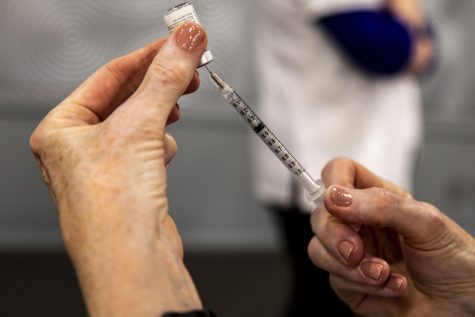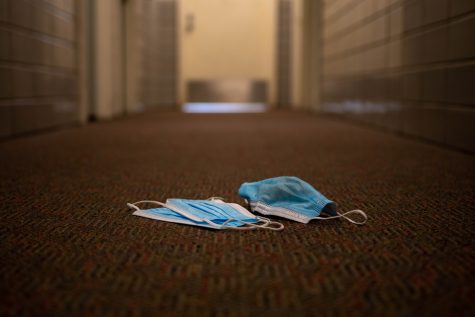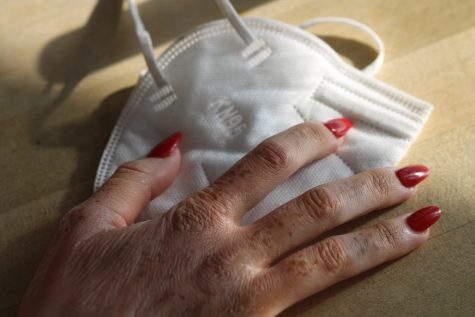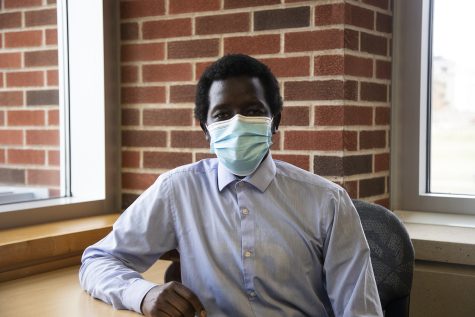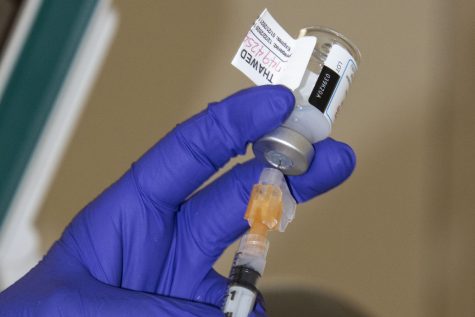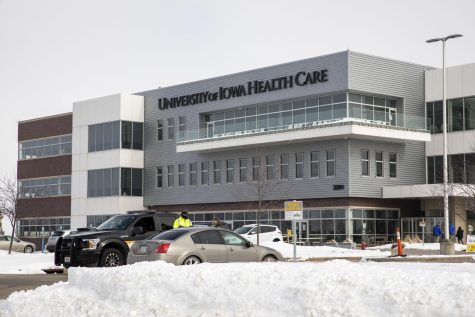University of Iowa Health Care sees increase in total inpatient days, admissions
The system is experiencing longer stays in its emergency department, among other increases.
University of Iowa Senior Vice President for Finance and Operations Rod Lehnertz speaks during a Board of Regents meeting over a livestream on Wednesday, April 6, 2022. Lehnertz went over the proposed renovations for the Hardin Library for Health Sciences.
April 6, 2022
The University of Iowa Health Care system is experiencing an increase in patients requiring admission, according to a presentation given to the state Board of Regents Wednesday.
The increase comes alongside total inpatient days going up for individual stays.
Increases across the system
There was a 5 percent increase in 2021 in the number of patients needing admission to the UI Health Care systems. This occurred after a decrease in total inpatient days in 2020 because of COVID-19:
- 248,508 patients requiring admission in 2019
- 243,337 patients requiring admission in 2020
- 255,827 patients requiring admission in 2021
The inpatient census has also risen, with occupancy back to critical levels according to the presentation. The high inpatient census number comes after a dip in 2020 numbers because of the pandemic:
- 5 percent occupancy rate in 2019 with 601 staffed beds
- 7 percent occupancy rate in 2020 with 609 staffed beds
- 2 percent occupancy rate in 2021 with 621 staffed beds
Kimberly Hunter, interim associate vice president of UI Health Care and chief executive officer of UI Hospitals and Clinics, said the number of inpatient days and the occupancy rate of UI Health Care systems is high in comparison with national rates.
“You want to have a certain number of beds that are empty so that as patients come into the hospital, you can admit them and move people along quite quickly,” Hunter said. “The average percent they recommend is to be 75 to 80 percent occupancy to be in an ideal state. So you can see that we are much busier than that, our beds are much more full.”
After a decrease in 2020, the amount of emergency departments and the length of stay has increased:
- 55,359 visits in 2019, with the median admit length of stay being 6 hours
- 47,023 visits in 2020, with the median admit length of stay being 5.8 hours
- 50,197 visits in 2021, with the median admit length of stay being 7,1 hours
Fewer available beds in UI Health Care facilities mean longer wait times in the emergency room to get an inpatient bed. Most patients that come to the emergency department tend to be acutely ill and more need hospitalization, Hunter said.
The average number of patients boarding in the emergency department overnight each night has also increased, growing sharply after a decrease in 2020. The number rose from 27 in 2020 to 35 in 2021.
“Some of those [patients] are just coming in for treatment and then will be discharged, but others are there because they’re waiting to go to an inpatient bed,” Hunter said. “While we continue to develop strategies to create additional capacity for our patient’s physical capacity, we also continue to work on being more efficient and innovative in the ways that we provide care for patients.”
Other increases at UI Hospitals and Clinics include:
- Total clinic visit volume increased 23 percent from 2017.
- Surgical volumes increased from 31,092 in 2020 to 34,129 in 2021 and surpassed pre-COVID-19 levels.
Patient Origin
Counties outside of Johnson County make up most inpatient discharges from UI Hospitals and Clinics, the presentation outlines:
- 6,918 patients discharged in 2021 are from Johnson County (21.4 percent)
- 2,348 patients discharged in 2021 are from Linn County
- 2,107 patients discharged in 2021 are from Scott County
- 3,100 patients discharged in 2021 are from outside of the state of Iowa
Hunter said the wide distribution of those discharged from UI Hospitals and Clinics is representative of how the system helps people from all areas.
“Only about 21 percent of the patients admitted to the hospital come from Johnson County where Iowa City is located, and so really, this should give you a good picture that we really are caring for people across the state,” Hunter said.
For the demographic of people who had emergency visits to UI Hospitals and Clinics, Johnson County represents close to half at 44.2 percent.
The number of patients from Johnson County that make up the emergency visit demographic is unusual, Hunter said.
“This is different than a lot of other hospitals and I think it really just shows you that patients who do need more complex care will travel farther or be transferred into us to receive the care that we can provide,” Hunter said.







